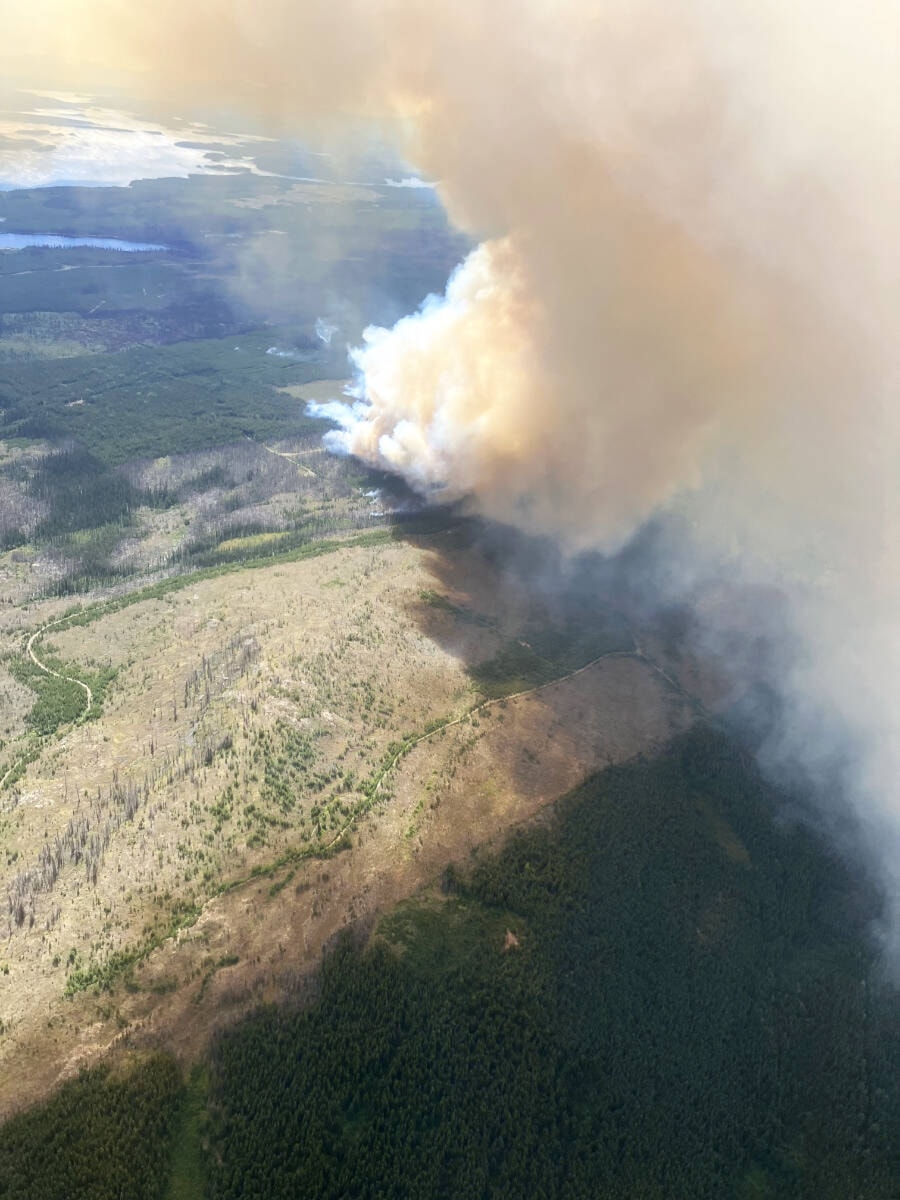Update on Peacock Creek:
On Aug. 15, the Peacock Creek wildfire displayed increased wildfire activity on the northwest corner of the fire perimeter.
Sarah Hall, B.C. Wildfire Service Information Officer said, “Driven by gusting westerly winds, high temperatures and low relative humidities, the wildfire displayed Rank 3 fire behaviour, meaning it had an organized flame front with a moderate rate of spread.”
She also said, “The wildfire was heading east and did not threaten any values or the community of Houston. Approximately 1 hectare of growth occurred on the northwest side of the Peacock Creek wildfire. Helicopter bucketing operations were performed and effectively reduced fire behaviour. A 20-person unit crew has been onsite today while being supported by aviation resources. A heavy equipment task force is positioned and ready to respond, if necessary, over the coming days. Crews are making excellent progress to extinguish the hotspots and will continue tomorrow, Aug. 17.”
Smoke is still visible to the community of Houston as a warming and drying trend persist over the complex area.
Update on Andrew Bay:
The Incident Management Team for the Nadina Lakes Complex is currently aware of increased activity being displayed on the Andrew Bay wildfire just west of Ootsa Lake.
Hall said, “This increased activity is being driven by gusting westerly winds, high temperatures and low relative humidities. The fire has breached one of the primary containment lines but is currently burning in an old fire scar from 2018 and regeneration cutblocks which contain a lower amount of available fuel. A heavy equipment strike team has been formed and operational staff will be engaging in suppression operations.”
Smoke is highly visible to surrounding communities.
